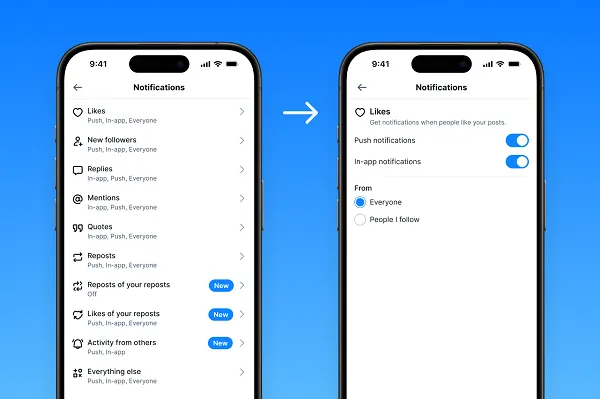How to Meditate While Raising Kids
Caring for young children doesn’t leave much room for meditation unless you allow your practice, and yourself, to evolve. The post How to Meditate While Raising Kids appeared first on Tricycle: The Buddhist Review.

Caring for young children doesn’t leave much room for meditation unless you allow your practice, and yourself, to evolve.
By Sumi Loundon Kim May 12, 2024 Photo by Harald Philipp | https://tricy.cl/2PrAS5O
Photo by Harald Philipp | https://tricy.cl/2PrAS5OShortly after the arrival of my first child, a friend without children innocently asked how my meditation practice was going. Flustered and embarrassed, I mumbled something vague, as I bounced my baby on my chest to soothe her. Truth was, I had no energy or time to sit on a cushion, since every minute was spent on this newborn. The moment signaled to me that my meditation routine had radically changed and that, unless I had Angelina-Jolie-like levels of childcare, I’d need to thoroughly rethink how to meditate with children in the home.
What follows is what I learned over the years combined with the pragmatic experience of countless others with children who figured out how to not only maintain meditation practice but also actually deepen it in profound ways.
Abandon all hope, ye who have children under three. If you have even one child under the age of three and you’re both at home all day, forget attempting formal, seated meditation. You get a Meditation Pass. If you have a quiet moment alone, go take a shower, exercise, nap, or watch a clip that makes you laugh. If the young one is taking an extended nap, by all means, sit on that cushion! However, toddlers have this freaky antenna that sends them a signal: “My caregiver is meditating, so now it’s time to wake up!” Parents consistently report that whenever they meditate, even if it’s at 4 a.m., the child will wake. We have no idea why, but it’s utterly maddening.
Turn quieter caregiving moments into meditation. Many infant or toddler tasks lend themselves beautifully to mindfulness meditation, if you do them intentionally. Nursing or bottle feeding, diapering, rocking the baby to sleep, bathing, strollering, walks with a carrier, and cuddling can all be done as meditations, with full attention to your senses, and touching into the breath. If the baby is on your body, you can breathe with the baby’s breaths. As with formal meditation, devices and screens are best shut down and out of sight.
With preschoolers and older children, meditate at the playground. If you’re alone at the park, since you have to watch them for safety anyway, use the time to be fully present. Practice mindfulness with each sense: listen to cars going by or the wind blowing through the trees; feel your butt on the cold bench or the warmth of your coat; smell the melting snow or the waft of Cheerios’ aroma from the snack cup.
Reassign your meditation location from home to work. Many adults on active family duty change their meditation period to strategic times at their place of work. Some meditate in their car in the office parking lot before heading inside for the day or returning home. Meditating in the car also works for those who pick up their children from school. Some meditate on the bus or subway. Others meditate at lunch. Some create meditation groups with their colleagues.
Meditate when the kids are sleeping. Once your children are older (over 3 or so, and depending on their developmental needs), you may have more energy left over to meditate in the early morning, later in the evening, or during their naptime. The “antenna problem” mentioned above seems to end once the kids start school.
Adjust how you meditate. Because childcare is so demanding, you may not have enough sleep or mental energy to concentrate as easily as before. As such, you may need to shift from focusing on one object (such as the breath) to opening your range of awareness. Listening meditation, body scan or body sensation awareness, walking meditation, and calm abiding may be more doable. Believe it or not, you will still have important insights despite not accessing a more settled, concentrated meditation.
If you had a crappy childhood, emphasize meditations on compassion or kindness for yourself. Parenting can bring up old patterns and pain from your own childhood, and you may end up unconsciously reenacting them with your children. Becoming a parent presents a golden opportunity to not only heal from your past but also become a significantly more conscious, loving parent in the present. To begin this healing, spend ample time doing metta (lovingkindness) for yourself. This work is actually about healing generations of trauma. Raising non-traumatized children means, ideally, that they will raise your grandchildren in a functional home, and so on. If I had to just give one piece of advice to parents it would be to do extensive meditation on self-compassion.
(I discussed this point at length in August in a Dharma Talk video series on nurturing an intentional, compassionate family. You can watch it here.)
Reframe “me time” to “we time.” Persisting in the pre-parent habit of thinking that you can only feel rejuvenated if you get “me time”—and for meditators, “me time” means silent, seated meditation—will only result in frustration and further feelings of depletion. If you find yourself thinking this way, you may need to make a considerable shift in identity such that “me” now includes your family members. This takes time, but it’s worth it. Opening up your sense of self to also consist of relationships reveals how the self is constructed through interconnectedness (or as Thich Nhat Hanh says, “interbeing”). Once you let go of the solitary self, spending time with your children becomes meditation itself, as long as you are with them intentionally in this way (again, no distractions, especially in the form of devices). This tectonic shift in identity is probably the single largest transformation a meditating parent undergoes, and it has profound implications for spiritual growth.
Practice with your children. Some families pull off the amazing feat of meditating together, but most find this to be a huge stretch as too many conditions (cohesion of developmental stages/ages, schedule alignment, etc.) have to come together to realistically make it happen. However, there are many ways to create a meditative family culture. For example, I’ve woven in times of intentional silence from my children’s earliest years so that they feel comfortable with quiet and being with themselves without distraction. We’ve practiced silence for portions of time while driving, going for walks, and cuddling. Another practice is to narrate what you’re aware of in the present moment—again, very informally. “I’m smelling the rain as it dries from the sidewalk; I see sparkles of sun on the wet leaves; I hear squirrels chattering.” Doing so not only helps you practice mindfulness but lays groundwork for your child’s own awareness. They’ll likely add further notes to yours.
(You can also incorporate meditation into your children’s bedtime routine with a nighttime metta practice.)
Don’t be a stone-cold Buddha. Should your children stumble into your bedroom when you and/or your spouse are meditating, don’t panic. It’s good for your children to see you meditating, as it plants seeds for their future practice. In our times, it is radical to choose to sit still and be silent, to resist an identity of busyness, ceaseless motion, and noise, and to reclaim our sanity and humanity by coming home to ourselves. However, when your child comes across you meditating, break from your meditation and welcome them into your lap. Embrace them with full tenderness, hold them, and breathe with them for a few minutes until they’re ready to float off elsewhere (and you may need to end your meditation, then, too). If you remain as a stone-cold Buddha when your child enters your zone, the child receives the message that meditation means disconnection and distance. If, however, you enfold the child into your peaceful sphere, the child associates meditation with care, presence, and love.
This article was originally published March 11, 2020.
![]()
Thank you for subscribing to Tricycle! As a nonprofit, we depend on readers like you to keep Buddhist teachings and practices widely available.
This article is only for Subscribers!
Subscribe now to read this article and get immediate access to everything else.
Already a subscriber? Log in.

 BigThink
BigThink 































